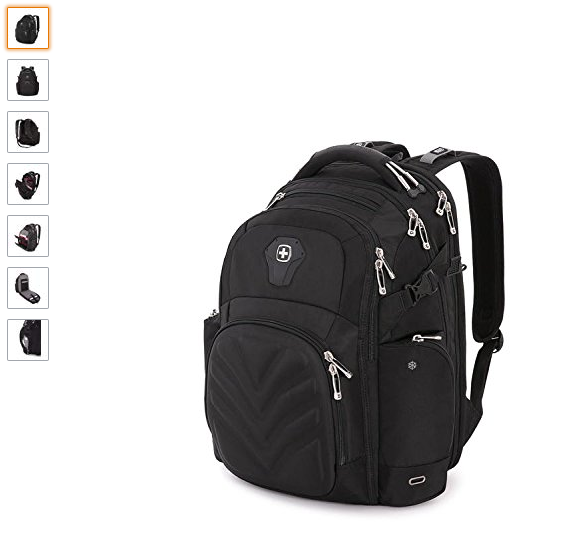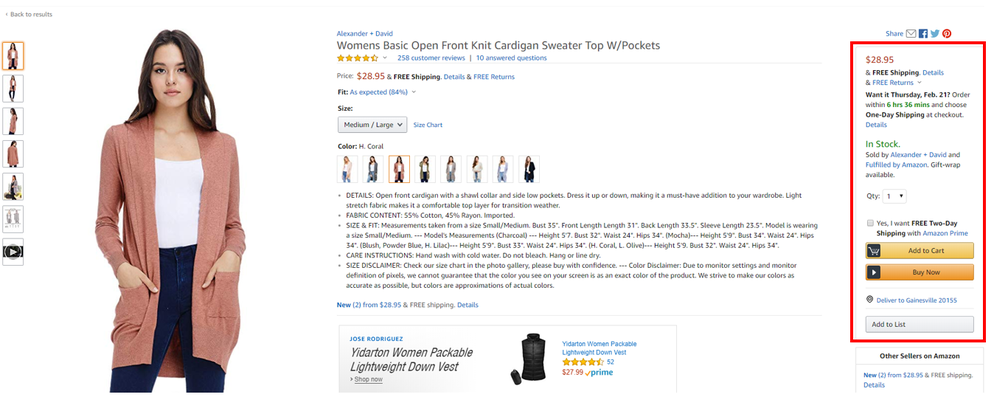
It's no secret that online marketplaces like Amazon are taking the retail industry (and the world) by storm. In 2016, Forrester reported that half of online retail spending came from marketplaces. In response to this trend, many retailers have begun developing an "Amazon Strategy." But in the Age of Amazon, are the only choices compete or die?
As it turns out, there's an even better option behind Door Number 3–developing an Amazon strategy that involves joining forces with the retail giant.
First, it's important to address how you view Amazon. For smaller and mid-market retailers, this online behemoth can seem like an intimidating force to be reckoned with. But Amazon is also a powerful channel for product discovery, a source of valuable social proof, and an important platform for advertising. Here's how to make the most of selling on Amazon:
Follow Amazon's selling policies.
The number one rule to selling successfully on Amazon is the following their policies for sellers. Amazon has outlined these rules in Seller Central, including everything from product detail page rules to drop shipping policies. Make sure you're aware of each of these rules before you begin to develop your own strategy for selling on Amazon.
Tailor listings for search.
Most purchases on Amazon begin with search. Amazon SEO can be just as important for driving sales as your regular SEO strategy. Make sure you understand Amazon's search algorithm, which ultimately displays products based on relevance and performance. Incorporate as many relevant product details in your descriptions as you can, including product identifiers, colors, sizes, etc. And include relevant keywords in your product titles as well so that customers can easily find them. This guide from WordStream provides more tips for optimizing your listings.
Optimize product images.
Images are one of the most important pieces of your Amazon product pages. Optimize your product images by providing multiple angles of the product, as well as multiple use cases for the product. For example, if you sell a purse that can be worn over the shoulder or held by your side, include photos of models wearing it both ways. This gives customers a way to 'try before they buy' and envision the product in their own lives. Also, ensure your photos are of high quality and not overlaid with text. And don't picture items that are NOT included with the order.

Create a compelling description.
Your product description is probably the second most important part of the listing after the images. When creating the description, be sure to use vivid descriptors and write with clear and concise language. Keep the description short (4-5 bullet points should suffice), and convey the most important features first. The description is your chance to address any product features that cannot be easily seen in the photos, or any FAQs that previous customers have had about the product. Make sure it communicates clearly the benefits of the product, and why buying it from you is the best choice.
Take advantage of promotional days.
In addition to the major online shopping days like Black Friday and Cyber Monday, be sure you are taking advantage of Amazon's Prime Day as well. In 2018, Prime Day was Amazon's biggest shopping event ever. It lasted for 36 hours and touted 100 million products sold. Retailers can make the most of selling on Amazon by running promotions during these days, when customers are already expecting deals and looking to shop online.
Utilize Amazon advertising.
While social media platforms know what consumers are interested in, Amazon can tell you where consumers are actually spending their money. This access to data is what makes Amazon such a powerful platform for advertising. How do these ads work? When you type in a keyword in Amazon, some of the top search results are sponsored posts. Sellers can gain visibility for their products by paying for these top positions by bidding on specific keywords to gain higher visibility in Amazon search engine results pages. If you are struggling to earn visibility on Amazon, bidding on keywords to improve your placement could be a valuable step.
Leverage product reviews.
92% of customers read reviews when shopping online, and a large number of customers actually look to Amazon for these reviews. Make sure your products have enough reviews to give customers the confidence to make a purchase. A good goal to aim for initially is at least 20 reviews per product. If you are struggling to earn reviews, try sending out post-purchase emails or special offers to customers who leave reviews. Once you've incentivized a few customers to leave feedback, others are more likely to follow suit.
Price competitively.
When pricing your items on Amazon, you should aim to be located in the "Buy Box." This area on the page gives your product the highest likelihood of being selected by a customer over a competitor. Underneath the buy box is where your competitors, or "Other Sellers", are located.

To get here, be sure to list your prices with the delivery costs included. No one likes to be surprised by additional shipping charges, especially in the days where automatic free shipping is expected. You can also incorporate Amazon coupons in your listing, which can improve your search ranking. However, keep in mind that when it comes to how reviews are displayed, those where customers paid full price are favored over discounted items.
Prioritize customer service.
When selling on Amazon, you are often competing with multiple sellers offering the same products, sometimes at lower prices. It's not necessary to engage in a race to the bottom price-wise, but in order to compete, you will need to ensure a positive experience for customers. Consumers today have higher expectations of retailers, and on Amazon, where convenience and speed is everything and competition is fierce, prioritizing customer service can help a brand stand apart. Make sure you address customer inquiries quickly, respond to all product reviews to thank customers for their feedback, and make sure you have a convenient, easy-to-understand return policy in place. Even something as small as sending out a coupon to repeat customers or thank you notes to customers who leave reviews can go a long way in creating a lasting brand relationship.
Also keep in mind...
One of the greatest challenges with selling on Amazon is inventory and data management. If you already sell your products on your own eCommerce site, having the same products listed in multiple places can create a risk of overselling. Virid's enterprise-grade eCommerce platform, marketAgility, connects seamlessly to online marketplaces, allowing retailers to manage their inventory in one dashboard and earn sales in multiple channels. For more information on how Virid can help you master selling across channels, schedule an appointment with our experts here.
For more content like this, subscribe to the Virid newsletter. And be sure to follow us on Twitter, LinkedIn, Facebook, and Instagram!

